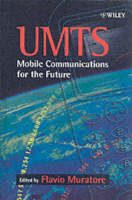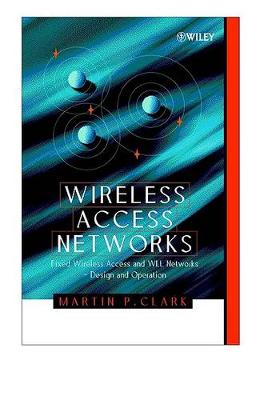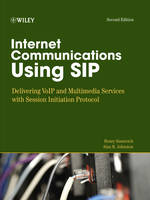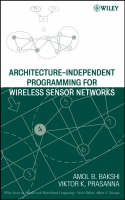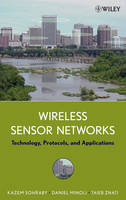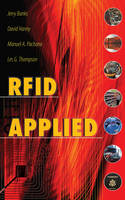Wireless Flexible Personalised Communications
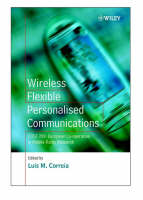 -15%
portes grátis
-15%
portes grátis
Wireless Flexible Personalised Communications
Correia, Luis M.
John Wiley & Sons Inc
03/2001
482
Dura
Inglês
9780471498360
15 a 20 dias
916
Table of Contents ix
List of Acronyms xii
I Introduction 1
1.1 Evolution of Wireless/Mobile Communication 1
1.2 Description of COST 259 7
1.3 References 12
2 Radio Systems Aspects 13
2.1 OFDM and Frequency Domain Techniques 14
2.1.1. Introduction 14
2.1.2. Alternative forms 17
2.1.3. Modulation and demodulation 24
2.1.4. Channel coding 26
2.1.5. Multiple access schemes 29
2.1.6. Amplitude limitation 29
2.1.7. Intercell interference 30
2.1.8. Synchronization 31
2.2 CDMA 43
2.2.1. Introduction 43
2.2.2. RAKE receivers 44
2.2.3. Linear and non-linear interference cancellation 45
2.2.4. Coding and modulation 47
2.2.5. Smart antennas 49
2.2.6. Parameter estimation 50
2.2.7. Demonstrators 51
2.2.8. Summary and conclusions 51
2.3 Modulation and Coding 51
2.3.1. Linear modulation 52
2.3.2. Non-linear modulation 53
2.3.3. FEC coding techniques 55
2.3.4. Equalization 58
2.3.5 Adaptive coding and modulation 59
2.4. DECT and Adaptive Sampling 62
2.4.1. Introduction and motivation 62
2.4.2. Principle of adaptive sampling 63
2.4.3. Determination of optimum sampling time 64
2.4.4. Non-linear receiver structures 65
2.4.5. Summary and conclusions 66
2.5 References 66
3 Antennas and Propagation 77
3.1. General Aspects of Propagation 78
3.1.1. Statistical and empirical modelling 79
3.1.2. Propagation measurements and channel sounders 112
3.1.3. Deterministic modelling 132
3.2 Directional Channel Modelling 148
3.2.1. Modelling concept 149
3.2.2. Outdoor measurements results 160
3.2.3. Indoor measurements results 171
3.2.4. Parameter settings 178
3.3. Smart Antennas 194
3.3.1. Introduction 194
3.3.2. Space and antenna diversity 197
3.3.3. Polarization diversity 201
3.3.4. Antenna arrays 203
3.4. Millimetre-wave Propagation 223
3.4.1. Path loss modeling 223
3.4.2. Wideband channel modeling 229
3.4.3. Impact of shaped lens antennas on the ChIR and cell coverage 239
3.5 Antennas for Mobile Phones 251
3.5.1 Communications performance 251
3.5.2. Standardized phone measurements 261
3.6. References 277
4 Network Aspects 307
4.1. Compatibility and Spectrum Efficiency 308
4.1.1. Spectral compatibility 308
4.1.2. Spectrum efficiency 314
4.2. Channel Allocation Strategies 327
4.2.1. Introduction 327
4.2.2. Concise data for automated frequency planning 330
4.2.3. Fixed channel allocation using graph colouring 335
4.2.4. Fixed channel allocation maximizing assigned TRXs 336
4.2.5. Fixed channel allocation minimizing interference 337
4.2.6. Distributed dynamic channel allocation 346
4.2.7. Benchmarking frequency allocation strategies 348
4.3. Cellular Aspects 359
4.3.1. Cell modelling 359
4.3.2. Tele-traffic engineering 363
4.3.3. Hot spot location 373
4.3.4. Mobility models 377
4.4. Network Optimization 386
4.4.1. Handover, power control and direct retry 386
4.4.2. Frequency hopping for capacity enhancement 398
4.4.3. Quality and capacity enhancement by adaptive techniques 407
4.5. Planning Methods and Tools 412
4.5.1. Geographic data 412
4.5.2. Methods for optimized planning 415
4.5.3. UMTS planning 419
4.6 Efficient Protocols for High Data Rates 426
4.6.1. High data rate protocols: general aspects 427
4.6.2. Wireless ATM 428
4.6.3. Packet reservation multiple access 429
4.7 References 433
Annex I - List of Contributors 451
Annex II - List of Participating Institutions 453
Index 457
Table of Contents ix
List of Acronyms xii
I Introduction 1
1.1 Evolution of Wireless/Mobile Communication 1
1.2 Description of COST 259 7
1.3 References 12
2 Radio Systems Aspects 13
2.1 OFDM and Frequency Domain Techniques 14
2.1.1. Introduction 14
2.1.2. Alternative forms 17
2.1.3. Modulation and demodulation 24
2.1.4. Channel coding 26
2.1.5. Multiple access schemes 29
2.1.6. Amplitude limitation 29
2.1.7. Intercell interference 30
2.1.8. Synchronization 31
2.2 CDMA 43
2.2.1. Introduction 43
2.2.2. RAKE receivers 44
2.2.3. Linear and non-linear interference cancellation 45
2.2.4. Coding and modulation 47
2.2.5. Smart antennas 49
2.2.6. Parameter estimation 50
2.2.7. Demonstrators 51
2.2.8. Summary and conclusions 51
2.3 Modulation and Coding 51
2.3.1. Linear modulation 52
2.3.2. Non-linear modulation 53
2.3.3. FEC coding techniques 55
2.3.4. Equalization 58
2.3.5 Adaptive coding and modulation 59
2.4. DECT and Adaptive Sampling 62
2.4.1. Introduction and motivation 62
2.4.2. Principle of adaptive sampling 63
2.4.3. Determination of optimum sampling time 64
2.4.4. Non-linear receiver structures 65
2.4.5. Summary and conclusions 66
2.5 References 66
3 Antennas and Propagation 77
3.1. General Aspects of Propagation 78
3.1.1. Statistical and empirical modelling 79
3.1.2. Propagation measurements and channel sounders 112
3.1.3. Deterministic modelling 132
3.2 Directional Channel Modelling 148
3.2.1. Modelling concept 149
3.2.2. Outdoor measurements results 160
3.2.3. Indoor measurements results 171
3.2.4. Parameter settings 178
3.3. Smart Antennas 194
3.3.1. Introduction 194
3.3.2. Space and antenna diversity 197
3.3.3. Polarization diversity 201
3.3.4. Antenna arrays 203
3.4. Millimetre-wave Propagation 223
3.4.1. Path loss modeling 223
3.4.2. Wideband channel modeling 229
3.4.3. Impact of shaped lens antennas on the ChIR and cell coverage 239
3.5 Antennas for Mobile Phones 251
3.5.1 Communications performance 251
3.5.2. Standardized phone measurements 261
3.6. References 277
4 Network Aspects 307
4.1. Compatibility and Spectrum Efficiency 308
4.1.1. Spectral compatibility 308
4.1.2. Spectrum efficiency 314
4.2. Channel Allocation Strategies 327
4.2.1. Introduction 327
4.2.2. Concise data for automated frequency planning 330
4.2.3. Fixed channel allocation using graph colouring 335
4.2.4. Fixed channel allocation maximizing assigned TRXs 336
4.2.5. Fixed channel allocation minimizing interference 337
4.2.6. Distributed dynamic channel allocation 346
4.2.7. Benchmarking frequency allocation strategies 348
4.3. Cellular Aspects 359
4.3.1. Cell modelling 359
4.3.2. Tele-traffic engineering 363
4.3.3. Hot spot location 373
4.3.4. Mobility models 377
4.4. Network Optimization 386
4.4.1. Handover, power control and direct retry 386
4.4.2. Frequency hopping for capacity enhancement 398
4.4.3. Quality and capacity enhancement by adaptive techniques 407
4.5. Planning Methods and Tools 412
4.5.1. Geographic data 412
4.5.2. Methods for optimized planning 415
4.5.3. UMTS planning 419
4.6 Efficient Protocols for High Data Rates 426
4.6.1. High data rate protocols: general aspects 427
4.6.2. Wireless ATM 428
4.6.3. Packet reservation multiple access 429
4.7 References 433
Annex I - List of Contributors 451
Annex II - List of Participating Institutions 453
Index 457



